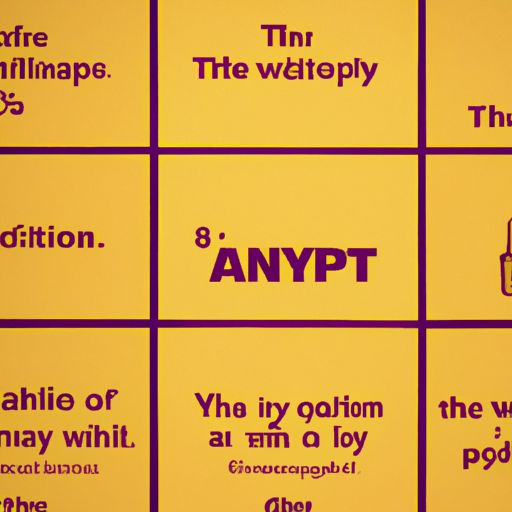
-
Table of Contents
The Role of Typography in Branding Innovation

Typography plays a crucial role in branding innovation. It goes beyond just choosing a font for a logo or a website; it has the power to evoke emotions, convey messages, and create a unique identity for a brand. In this article, we will explore the significance of typography in branding and how it can drive innovation. We will also examine some successful case studies and provide valuable insights into the world of typography in branding.
The Power of Typography in Branding
Typography is the art and technique of arranging type to make written language legible, readable, and visually appealing. When it comes to branding, typography is a powerful tool that can shape the perception of a brand and influence consumer behavior. Here are some key reasons why typography is essential in branding:
- Brand Identity: Typography helps create a unique visual identity for a brand. The choice of fonts, styles, and layouts can differentiate a brand from its competitors and make it instantly recognizable.
- Emotional Connection: Typography has the ability to evoke emotions and create a connection with the audience. Different fonts can convey different moods and feelings, allowing brands to establish a specific tone and personality.
- Brand Consistency: Consistent typography across all brand touchpoints, such as logos, websites, packaging, and advertisements, helps reinforce brand recognition and build trust among consumers.
- Communication: Typography is a powerful communication tool. It can enhance the readability of a message, highlight important information, and guide the audience’s attention.
Typography Trends in Branding
Typography trends in branding are constantly evolving, influenced by cultural shifts, technological advancements, and design aesthetics. Staying up-to-date with these trends is crucial for brands to remain relevant and innovative. Here are some current typography trends in branding:
- Minimalism: Minimalist typography focuses on simplicity and clean lines. It removes unnecessary elements and embraces whitespace, creating a modern and sophisticated look.
- Custom Typography: Brands are increasingly investing in custom typefaces to establish a unique visual identity. Custom typography allows brands to differentiate themselves and create a strong brand presence.
- Responsive Typography: With the rise of mobile devices, responsive typography has become essential. Brands are adopting flexible type systems that adapt to different screen sizes and resolutions, ensuring optimal readability and user experience.
- Handwritten Fonts: Handwritten fonts add a personal touch and convey authenticity. They are often used by brands aiming to create a friendly and approachable image.
Case Studies: Typography in Successful Branding
Let’s explore some case studies that demonstrate the impact of typography in successful branding:
1. Coca-Cola
Coca-Cola is a prime example of how typography can become synonymous with a brand. The brand’s iconic script logo, known as the “Spencerian Script,” has remained virtually unchanged since its creation in the late 19th century. The flowing script evokes a sense of nostalgia and tradition, while also conveying a sense of happiness and joy.
2. Airbnb
Airbnb’s rebranding in 2014 showcased the power of custom typography. The brand introduced a custom typeface called “Airbnb Cereal,” which was designed to be friendly, approachable, and easily readable across various platforms. The unique typography helped Airbnb establish a distinct visual identity and set itself apart in the crowded hospitality industry.
3. Netflix
Netflix’s recent rebranding in 2016 included a shift towards a more minimalist and modern typography. The brand adopted the custom typeface “Netflix Sans,” which was designed to be highly legible and versatile across different devices and languages. The new typography reflected Netflix’s evolution as a global streaming platform and its commitment to simplicity and accessibility.
The Future of Typography in Branding
The future of typography in branding is exciting and full of possibilities. As technology continues to advance, new opportunities for innovative typography emerge. Here are some trends that may shape the future of typography in branding:
- Variable Fonts: Variable fonts allow for more flexibility and customization in typography. They enable designers to adjust various aspects of a font, such as weight, width, and slant, in real-time, providing endless possibilities for creative expression.
- Augmented Reality (AR) Typography: AR technology opens up new avenues for typography in branding. Brands can use AR to overlay typography onto physical spaces, creating immersive and interactive experiences for their audience.
- Dynamic Typography: Dynamic typography adapts and changes based on user interactions or environmental factors. It can create personalized experiences and enhance user engagement.
Summary
Typography plays a vital role in branding innovation. It helps create a unique brand identity, establish emotional connections with the audience, and communicate effectively. Staying updated with typography trends and leveraging its power can give brands a competitive edge. Successful case studies, such as Coca-Cola, Airbnb, and Netflix, demonstrate the impact of typography in branding. The future of typography in branding holds exciting possibilities, including variable fonts, AR typography, and dynamic typography. By understanding and harnessing the power of typography, brands can drive innovation and create memorable experiences for their audience.
